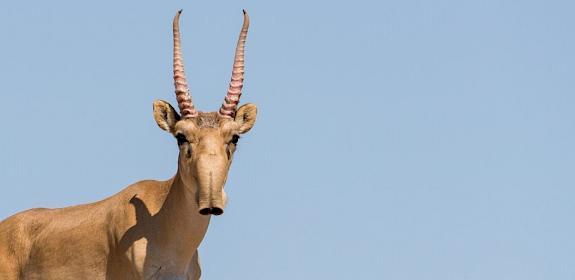US and India Co-operate to Combat Illegal Trade in Wildlife
New Delhi, India, 29th January 2013—The US Under Secretary of State for Economic Growth, Energy, and Environment Robert D. Hormats co-chaired a panel discussion on Illegal Trade in Wildlife with WWF India CEO and Secretary General Ravi Singh today.

Illegal wildlife trade is estimated at USD10–20 billion annually, and is among the largest sources of illegal trade. Increased firepower and ruthless tactics on the part of the poachers jeopardize security, stability and the rule of law in countries across the globe. Beyond moral and environmental implications, large scale poaching threatens the livelihoods and economic opportunities of local communities.
At the roundtable—which was organized by the US Embassy, TRAFFIC and WWF India—U.S. and Indian government officials, NGOs, wildlife lawyers and enforcement officials discussed some of their challenges and successes in combating wildlife trafficking.
Under Secretary Hormats emphasized the need for high-level political will, public outreach, and greater international co-ordination and co-operation to combat wildlife trafficking, including the strengthening of regional enforcement networks such as the South Asia Wildlife Enforcement Network (SAWEN).
WWF India Secretary General and CEO Singh noted the intimate link between the decline of India’s wildlife species and alarming trends in illegal wildlife trafficking. “It is imperative that issues of illegal wildlife trade should be taken up in a strategic manner, linking national agencies and senior government executives. Here, the US government can be an important partner on global wildlife intelligence, networking and sharing of best practices in enforcement.”
Dr Shekhar Kumar Niraj, Head of TRAFFIC in India highlighted the magnitude of wildlife crime and illegal wildlife trade, and how it has evolved to be one of the most important challenges in conservation of species today. He said: "Whether at the local, regional or global level, the efforts to eliminate wildlife crimes need to be assisted collectively with our trained skills, scientific knowledge, and improved resources.
At this important meeting, Mr Megh Bahadur Pandey, Director General of the Department of National Parks and Wildlife Conservation in Nepal and Chief Enforcement Co-ordinator of SAWEN stressed the need to strengthen cross border co-operation for eradicating wildlife crime as manifested in the SAWEN initiative. He expressed concern and shock over the seize of Tiger skins, skulls, bones and other body parts pertaining to approximately 40 Tigers and 1,185 kg of Shahtoosh wool, along with many other wildlife items in the region in recent weeks.
The US and India have worked together on wildlife conservation for over 25 years to combat poaching, manage wildlife resources, improve enforcement capacity, and reduce consumer demand for illegal wildlife products.
“India and the United States have strong, historic ties in wildlife conservation. Our co-operative work has ranged from research on how to manage human-wildlife conflicts, to conservation education projects, to wildlife enforcement training,” said Under Secretary Hormats
TRAFFIC’s work supporting the implementation of SAWEN objectives, through working with the Secretariat and member countries (Afghanistan, Bangladesh, Bhutan, India, Maldives, Nepal, Pakistan and Sri Lanka) is supported by funding from the US Department of State.




